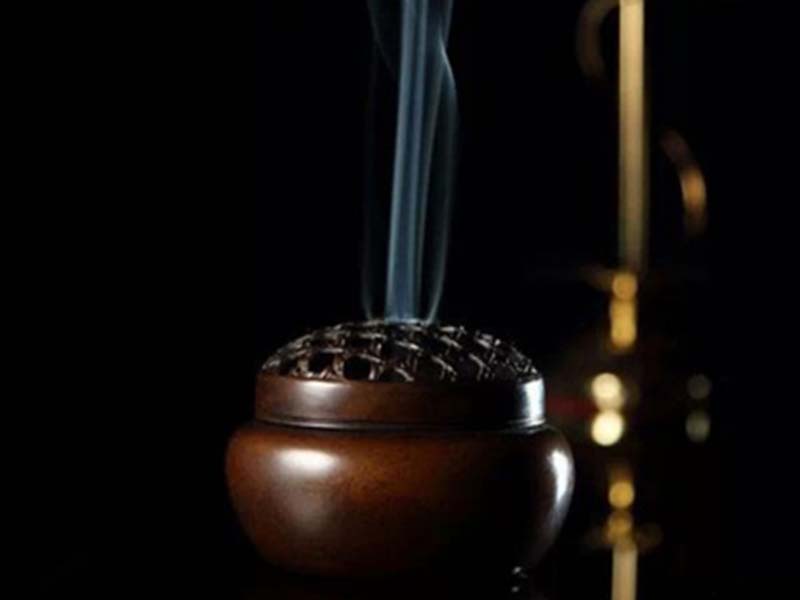
There is a incense burner in front of the main hall of Buddhist monasteries. Because incense, especially incense used for burning, is closely related to people's spiritual activities, many religions from ancient to modern, whether large or small, Eastern or western, have paid special attention to incense, especially Buddhism.
From the books handed down, we can see that there are many records of incense in Buddhist scriptures, such as the Buddhist Sutra of Righteousness, the Sutra of Six Ancestors, the Sutra of Huayan, the Sutra of Lengyan, the Yinyi of Xuanying and the Records of the Western Regions of the Great Tang Dynasty, etc. Moreover, all the saints of Buddha have related discussions on incense, such as Sakyamuni Buddha, Dashi to Bodhisattva, Guanyin Bodhisattva, Huineng Master, Longshu, and so on. Bodhisattva and so on; the kinds of perfumes recorded in the Scriptures are hard to count, and most of the perfumes used today are recorded in the scriptures.
When Buddhism had just risen and Sakyamuni Buddha was still alive, incense was highly respected. Over the next two thousand years, Buddhist family incense custom remained unchanged, and was constantly strengthened and developed, so that now there must be cigarettes in Buddhist temples and incense case tripod in households.
Buddhism's emphasis on incense can be reflected in the following aspects:
Buddhists believe that fragrance and perfect wisdom are interlinked.
Buddhism holds that there is a special relationship between the wisdom and virtue of incense in human beings. The delicate fragrance and the perfect wisdom are in harmony. The virtuous and sage of successful practice can even emit a special fragrance. According to the scriptures, when Buddha speaks, his whole body will emit a delicate fragrance, and his fragrance can perfume ten sides and shake three boundaries. Therefore, incense is often used in Buddhist scriptures to illustrate the morality of Taoists.
Buddhists believe that incense can communicate with the common saints and is the most excellent offering.
When the Buddha lived, his disciples offered incense. Buddhists believe that "incense is the envoy of Buddha" and "incense is the envoy of confidence", so incense burning is almost a necessary part of all Buddhist affairs. From daily chanting and meditation, to grand bathing Buddhist law clubs, land and water law clubs, Buddhist statues, enlightenment, preaching precepts, liberation and other Buddhist activities, there is no lack of incense. In particular, the activities of the Law Society must begin with a solemn incense ceremony. There are very rich kinds of aromatic herbs used in Buddhism. Besides burning incense, perfume, perfume coated on the body and powdered incense are commonly used. Perfume is also used in bathing Buddha, which is a very high support. For example, the "Master's Product" in the "Fahua Jing" lists "ten kinds of offerings": flowers, incense, jars, last incense, smear incense, incense burning, covers, buildings, clothes and kabuki; four of them are fragrances.
Buddhist incense supplementary practice
Buddhists believe that fragrance has a direct impact on human body and mind. Buddhism has advocated the use of incense in meditation, chanting and other practices since ancient times, and incense is everywhere inside and outside the temple to create a good practice environment. Moreover, the type of fragrance is carefully selected, not only using the superior single fragrance, but also according to the specific formula to make more suitable fragrance for practice. Even different disciplines use different recipes of fragrance. Many successful mages are also masters of blending incense.
Buddhist Medicine Treats Diseases with Fragrance
Because most of the spices are medicinal materials, such as aloes, sandalwood, cloves, woody incense, cinnamon, calamus, borneol, musk, deodorant, benzoin, rosin and so on, Buddhist incense was also used to treat diseases early. The fragrance used to cure diseases, also known as "fragrant medicine", is an important part of "Buddhist medicine".
Since Buddhism was introduced into China, Buddhist medicine, which is quite similar to the theory of traditional Chinese medicine, has made great contributions to the development of traditional Chinese medicine. For example, the knowledge of Buddhist medicine on perfume has expanded the categories of traditional Chinese medicines, adding new medicinal materials such as aloe, incense (frankincense), cocktongue, patchouli and suhexiang, and adding "aromatic resuscitation" medicinal materials in classical medical books such as Compendium of Materia Medica.
The formulation of Buddhist fragrant medicine is very rich and has a wide range of uses. Not only does it burn incense to remove dirt and contamination and prevent plague, but it also has special prescriptions to treat special diseases. There are many ways to use fragrant medicine. Some are directly fumigating, some should be orally taken, others are made of perfume ointment, some are used in soaking and bathing.
There are many kinds of Buddhist fragrances.
The Buddhist family uses a wide variety of spices, including those produced in South Asia, Nanyang Islands, Western Asia, Australia and China. Early Buddhist scriptures recorded many kinds of spices, such as aloes, sandalwood, borneol, calamus, benzoin, bezoar, tulip, alfalfa, musk, realgar, rhubarb, Lycium barbarbarum, pine resin, cinnamon, angelica, aconite, Dingzixiang, reed, bamboo yellow, cardamom, kale, oyster, mahogany, mustard, horseberry, etc.
Buddhists have a wide range of perfumed products, such as "burning incense" used for fumigation, coated with "fragrant incense", perfumed incense soup with spice and perfumed incense, flakes, lumps of fragrant wood, and powdery scent. Moreover, these rich and colorful fragrances have appeared since the beginning of Buddhism.

